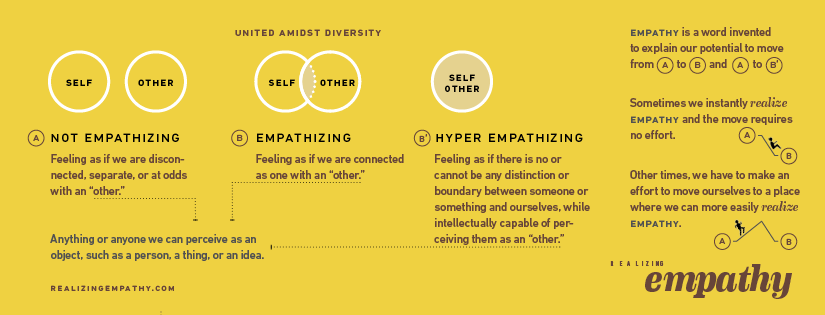Empathy realizing by itself is easy.
Realizing empathy, on the other hand, can be difficult.
Sometimes this is difficult due to a bias or a lack awareness.
But that’s not all.
What can also make it difficult is tension.
Tension is a conflict between what our mind needs or values vs what it has instead.
When we experience too much tension, we can become mired in the discomfort or pain.
In this state, we have no room in our being to realize our empathy.
When two people are experiencing significant tension, without the help of a 3rd-party—not only free of significant tension, but also well-versed in the art of realizing empathy—, it is unlikely the two will be able to realize empathy with each other.
